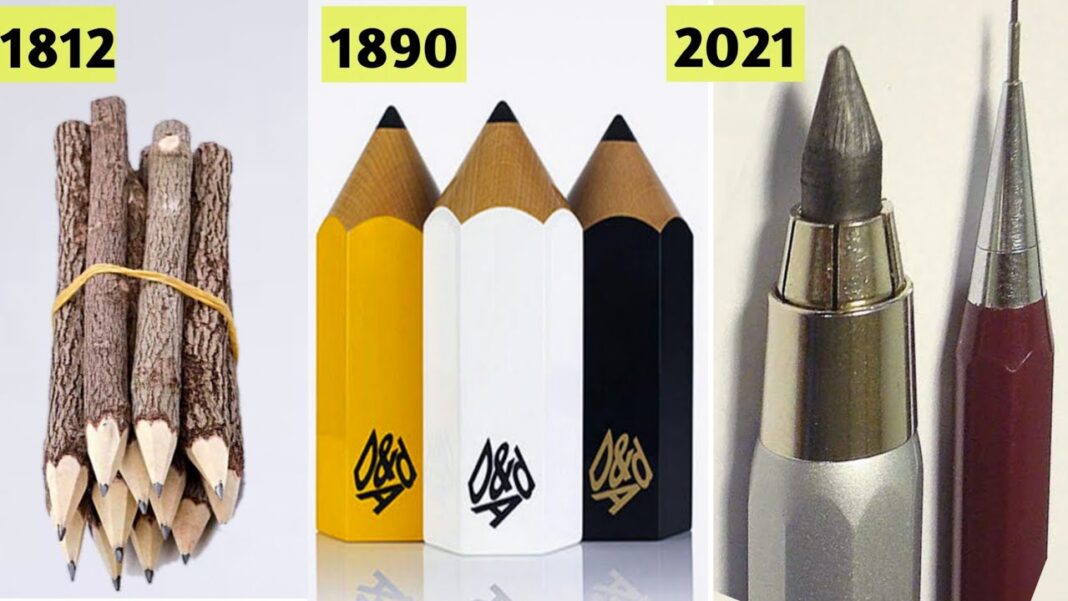The History of the First Pencil, Having previously explored such mysteries as who invented writing and how sounds became shapes, it’s time to turn to something much less mysterious, a seemingly mundane yet enormously influential tool of human communication: the humble pencil. “Take a pencil to write with on aeroplanes. Pens leak,” states the first of Margaret Atwood’s 10 rules of writing. “But if the pencil breaks, you can’t sharpen it on the plane, because you can’t take knives with you. Therefore: take two pencils.” But even though the pencil has fueled such diverse feats of creative culture as celebrated artists’ sketchbooks, Marilyn Monroe’s soulful unpublished poems, Lisa Congdon’s stunning portraits, and David Byrne’s diagrams of the human condition, it has only been around for a little over two hundred years. In the altogether fascinating 100 Essential Things You Didn’t Know You Didn’t Know: Math Explains Your World (public library), John D. Barrow tells the story of this underrated technological marvel:
The modern pencil was invented in 1795 by Nicholas-Jacques Conte, a scientist serving in the army of Napoleon Bonaparte. The magic material that was so appropriate for the purpose was the form of pure carbon that we call graphite. It was first discovered in Europe, in Bavaria at the start of the fifteenth century; although the Aztecs had used it as a marker several hundred years earlier. Initially it was believed to be a form of lead and was called ‘plumbago’ or black lead (hence the ‘plumbers’ who mend our lead water-carrying pipes), a misnomer that still echoes in our talk of pencil ‘leads’. It was called graphite only in 1789, using the Greek word ‘graphein’ meaning ‘to write’. Pencil is an older word, derived from the Latin ‘pencillus’, meaning ‘little tail’, to describe the small ink brushes used for writing in the Middle Ages.

But the history of the pencil, like that of many seminal innovations, has a dark side:
The purest deposits of lump graphite were found in Borrowdale near Keswick [England] in the Lake District in 1564 and spawned quite a smuggling industry and associated black economy in the area. During the nineteenth century a major pencil manufacturing industry developed around Keswick in order to exploit the high quality of the graphite.
And yet the pencil industry blossomed:
The first factory opened in 1832, and the Cumberland Pencil Company has just celebrated its 175th anniversary; although the local mines have long been closed and supplies of the graphite used now come from Sri Lanka and other far away places. Cumberland pencils were those of the highest quality because the graphite used shed no dust and marked the paper very well.

Plain as it appears, however, the pencil has evolved significantly since its invention:
Conte’s original process for manufacturing pencils involved roasting a mixture of water, clay and graphite in a kiln at 1,900 degrees Fahrenheit before encasing the resulting soft solid in a wooden surround. The shape of that surround can be square, polygonal or round, depending on the pencil’s intended use — carpenters don’t want round pencils that are going to roll off the workbench. The hardness or softness of the final pencil ‘lead’ can be determined by adjusting the relative fractions of clay and graphite in the roasting mixture. Commercial pencil manufacturers typically market 20 grades of pencil, from the softest, 9B, to the hardest 9H, with the most popular intermediate value, HB, lying midway between H and B. ‘H’ means hard and ‘B’ means black. The higher the B number, the more graphite gets left on the paper. There is also an ‘F’, or Fine point, which is a hard pencil for writing rather than drawing.
Barrow offers the science behind an oft-cited trivia factlet:
The strange thing about graphite is that it is a form of pure carbon that is one of the softest solids known, and one of the best lubricants because the six carbon atoms that link to form a ring can slide easily over adjacent rings. Yet, if the atomic structure is changed, there is another crystalline form of pure carbon, diamond, that is one of the hardest solids known.

For the mathematically-minded, Barrow offers a delightful curiosity-quencher:
An interesting question is to ask how long a straight line could be drawn with a typical HB pencil before the lead was exhausted. The thickness of graphite left on a sheet of paper by The History of the First Pencil a soft 2B pencil is about 20 nanometers and a carbon atom has a diameter of 0.14 nanometers, so the pencil line is only about 143 atoms thick. The pencil lead is about 1 mm in radius and therefore ? square mm in area. If the length of the pencil is 15 cm, then the volume of graphite to be spread out on a straight line is 150? cubic mm. The History of the First Pencil If we draw a line of thickness 20 nanometers and width 2 mm, then there will be enough lead to continue for a distance L = 150? / 4 X 10-7 mm = 1,178 kilometers.






